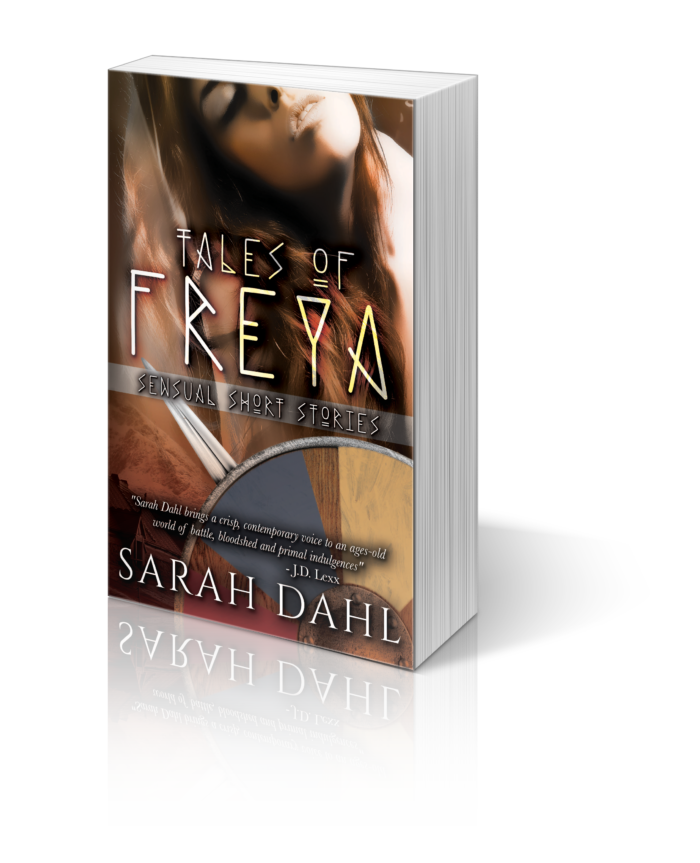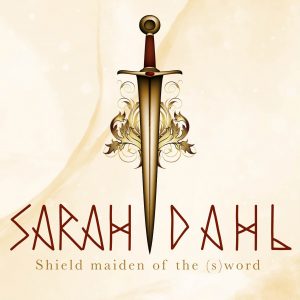From pantser to plotter?
Or: how to tame the novel-beast
I gave away that — besides editing the Eifel novel and writing/editing Viking short stories — I am in the planning stages of my next long Viking novel (or series, rather). It’s been simmering inside me for a long time, and I can’t wait to finally put down the first words — in a proper project file with a working title, on my computer.
But not yet.
I am writing for this story about ‘a shattered woman becoming a fierce warrior who hunts down her tormentor and discovers a massive secret’ all the time, for months now. But there is no project “shieldmaiden novel” at the moment, a Scrivener file is still inexistent. And still, the novel is slowly taking shape. I’m taking notes almost on a daily basis, whenever my troll muse pokes me in the side. Sometimes this turns into elaborate writing sessions, but nothing of it is going into my laptop. It’s all written in a thick, black notebook by hand, with lots of different headlines, such as “scene sketch”, “character sketch”, “timeline”, “dialogue”, “battles” etc.
Maybe I should fill you in on how I tackle this Fenrir (a mythological, massive Viking wolf) of a project.
The idea & planning stages:
I had the idea for this project a long time ago, but first had to finish my current novel (“Tilda & Leo”). I definitely need a clear mind and focus once I take on this beast. I know it will develop into that, a beast of a project, maybe running over the course of several books. It’s that massive, if I get to turn all my notes and ideas into actual scenes. Which is probably not going to happen. But just write and plan one novel at a time.
We all know that a writing idea can go either way: develop into a massive project with plot lines that need at least one book if not several to tell the whole story. Or it fizzles out after an initial phase of excitement and after the first chapters, when you find your great idea actually wasn’t so great or substantial enough to become a good book. Which happens all the time, and to all authors (and probably more often to pantsers than plotters, I’d guess).
With this idea, I knew I wanted to go all the way, and the material kept piling up.  I have pillars of events I need in order to stabilise the story, and necessary developments the characters must go through. So I bought a thick, black notebook and started to write everything down. Ideas hit me at all times, day and night. Especially in the early morning hours, just after waking, my mind runs wild. This is my most productive planning/idea time. So I grabbed my notebook (or even phone-notepad) and scribbled everything down under crude headings such as mentioned above, and the pages kept filling until the sorting of all the ideas became increasingly difficult.
I have pillars of events I need in order to stabilise the story, and necessary developments the characters must go through. So I bought a thick, black notebook and started to write everything down. Ideas hit me at all times, day and night. Especially in the early morning hours, just after waking, my mind runs wild. This is my most productive planning/idea time. So I grabbed my notebook (or even phone-notepad) and scribbled everything down under crude headings such as mentioned above, and the pages kept filling until the sorting of all the ideas became increasingly difficult.
Then the angst set in.
I knew this could easily overwhelm me. I needed a plan.
How to tame the beast
I have always been a pantser by heart. I tend to start a story with a rough or more detailed idea and just type without looking back, developing characters and ideas as I go along. I’ve written at least *counts* four or five novels like that. None of them became a “book”, but that’s because I never edited them properly. They came alive before I became a “writer” with the necessary time and dedication.
Once I had both time and dedication, I wrote “Tilda & Leo” the pantser way, with a just a small notebook at hand, filled with ideas that had no connection or stringent plot line. But: these notes were not guiding me, they were options I could or couldn’t use for the story. Most of them changed massively or went unused.
Options are no real help to shape a story.
And for this Viking novel, I felt pantsing it meant losing it.
So for the first time I promised myself to hold back and plan my writing. To do this massive idea justice, I needed to tame it, make it accessible for myself, before I started writing it. I didn’t want to confuse myself with all the “options” I’d opened up. It would be hard enough to follow timelines and character arcs etc. with this one, as it will span a long period of time and many parallel events that will unfold in several layers. I try to keep it simple, but there is so much substance to this that it felt like a loaf of clay that’s getting heavier in my hands every day.
So how do I shape the proper story out of this moist, promising loaf, which threatens to collapse and run in all directions once I put it down on my potter’s wheel? 
I let it rest and settle a little. To start work with it straight away would mean it’s not ready to be formed properly into the shape I have in mind for it. Because this time, I DO have a shape in mind for it. There is a clear outline in my head and in the notebook, but I have to flesh it out more and I do so every day.
So my notebook filled and fills, pages with sketches, timelines, even dialogue sequences. I brainstorm a lot with my writing buddies. I bounce off ideas as if I’d already started typing. The more my notebook fills, the more my characters start to take shape and talk to me. And this was when the fun part started: we talk about the people of my book as if they already existed, we have a feeling for who they’d be and what they’d do and say. We even found pictures of what they’d look like (for now) and crafted scenes and dialogue, finding necessary twists and turns that the story will need to take.
Some characters started their life earlier than others. There is a protagonist I thought would be less important, but he kept crawling inside my mind and dictating me stuff (no kidding, my writing friends will not what I mean). Whereas the main character, my shieldmaiden in the making, kept rather quiet up until recently. She was probably listening to that guy as well, and then responded with her own view on things. It’s all great fun to see them interact and come to life.
But: I’m doing it all by hand, scribbling and crossing out, even tearing out pages and rearranging them. I stacked photos of people and locations into the back pocket of the notebook (a very handy option).
And my characters are watching me and become more demanding and sometimes even shout at me to let them live, to tell the world their story and NOW. What’s more, even my writing buddies keep asking: “You have it all planned out, when will you start writing it? What the fuck is holding you back, you do know it all, you have it all answered?”
And I’m proud to report: pantsing Sarah is restraining her wild beast.
I’m not letting the characters or myself loose yet. And it’s not out of fear.
Letting the loaf rest — and work
By letting the story rest and work in my mind, and by gently squeezing it here and there, poking ideas to see if they’re good or useless, I find out what the proper substance of my story loaf is. I have shifted some ideas and even changed characters and their goals, BEFORE I’ve started writing the story! This is a first for author Sarah, and something that feels entirely right to do with this project. I admit I have no idea what a proper, trained plotter does, there are a hundred ways to plan a story. But for me, this is the right approach.
I’m still kneading the story loaf, flipping it over and flattening it out to see what it’s like from all angles. I know I won’t do this forever, there is a point when I need to actually put it onto the potter’s wheel and start turning it. But it’s so much easier to know that once that wheel starts turning, I’ll know exactly how to work it to give it the intended form.
There aren’t many ways in which to do this, to tell this story right. I want to do my idea justice and not be led astray by my own directionless approach. I want to be able to control this beast rather than be controlled or distracted by too many options. It’s too big to just jump right in and see what happens.
And one day soon, once the current novel is finished and my planning done, I’ll open up a new Scrivener document saying “Shieldmaiden project” — and it will feel heavenly to finally put — not pen to paper, but my hands on the keys. I have the first scene scribbled down, ready to be typed. Ask me in October what it felt like to actually write “First chapter”. 🙂
I’m handing the comment section over to you, writing guys, how do you approach your projects? Did you change your routines at some point, as I felt was necessary? However you do it, I’m always interested to see how other writers work. Do you have a tried and tested approach for longer works, or do you adjust your planning to every project’s needs? In what way? Or are you a pantser and happy with it, just like I’ve been (or still am, for short works, that is)? I’d love to hear about your experiences!






Comments (2)